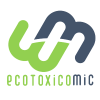EcotoxicoMic Webinar
Wednesday, December 4, 2019 (1:30 pm, Paris Time Zone)
Webinar Registration: click here
Teofana Chonova (INRAE, Thonon-les-bains, France)

Conference Title:
Pharmaceuticals in freshwater environments and their effect on microbial biofilm communities
Abstract:
Freshwater ecosystems are continuously impacted by anthropogenic pressure. One of the main sources of contamination are wastewater treatment plant (WWTP) effluents. Composition, toxicity levels and impact of treated effluents (TE) on recipient aquatic ecosystems may strongly differ depending on the wastewater origin. In the last decades, hospital wastewater (HWW) received increasing attention because it contains a wider spectrum and higher concentrations of pharmaceutical compounds (PhC) compared to urban wastewater. PhC raise concerns because of their highly bioactive nature at low concentrations and chronic releases in the environment. The ability of aquatic biofilms to respond to chemical, physical and biological environmental disturbances turns them into effective biological sensors, potentially indicating PhC contamination released with TEs.
Our work aims to 1) Evaluate the transfer of PhC and microorganisms from urban and hospital wastewater to the recipient river, and 2) Examine the environmental impacts of TEs on environmental biofilm communities. To these aims, concentrations of PhC and conventional parameters were measured in urban and hospital wastewaters, their TEs and the recipient river up- and downstream from the WWTP output using composite water column samples and passive samplers. In parallel, biofilm colonization experiments were performed in the two TEs and in the recipient river to study bacterial and diatom biofilm communities using DNA metabarcoding.
PhC and nutrients exhibited higher total concentrations in HWW compared to urban wastewater. Removal efficiency was compound- and basin specific, resulting in urban and hospital TEs with different composition. Despite the high dilution in the recipient river, the release of urban and hospital TEs resulted in an increase of PhC and phosphate concentrations downstream from the WWTP output. The location-specific concentrations of pollutants led to biofilm community changes on different levels – diversity, taxonomic composition, functional traits and phylogenetic position. Several bacterial genera including pathogenic species were abundant in urban and hospital TEs. Within diatoms, TEs were dominated by motile groups with polysaprobic preferences while river sites favored oligotrophic and oligosaprobic taxa. The factors most important for diatom community changes in TEs included beta-blockers and non-steroidal anti-inflammatory drugs, antibiotics and phosphate. Transfer of bacteria and diatoms from TEs and adapted development of biofilm communities in the recipient river downstream from the WWTP output was also observed. For diatoms, 27% of the OTUs detected in the river downstream were revealed as indicator for urban or hospital TEs and were absent upstream. Biological diatom index was calculated to evaluate the ecological status of the recipient river and suggested a severe water quality decrease linked to the release of both urban and hospital TEs.
Finally, the transfer of specific compounds and microorganisms from HWW indicate a potential environmental risk. In-depth assessment of biofilm community composition using DNA metabarcoding is proposed as a promising technique to highlight the disturbing effect of PhC released with TEs in aquatic environments.
